How Modern Horror Tropes are Revitalizing the Current Horror Genre
Since the introduction of the horror genre, our love for being terrified has only grown. What is it about being frightened to death that makes us feel alive? Is the rush of being able to view others in horrifying situations from the safety of our homes a voyeuristic thrill? Oh, you better believe it.
The trouble is, what happens when the familiar tropes stop scaring us and the over saturation of horror films reaches critical mass and we can no longer reach the same euphoric terror we once had? Unfortunately, the same ideas from the 1960s, 1970s, and 1980s have been rehashed and repackaged so many times over to the point where the things that should scare us couldn’t even frighten a small child.
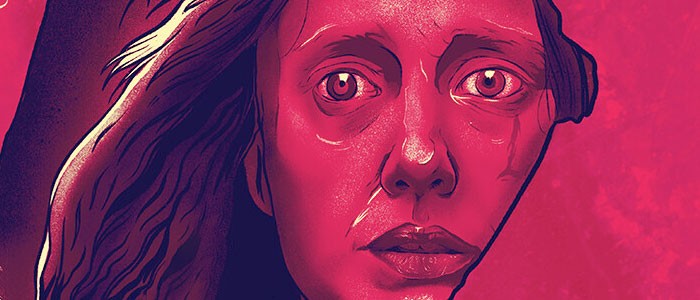
Hollywood’s peddling of mediocre films has flooded the genre into a frail, shambling corpse of its former glory. The lumbering serial killer pursuing its victims at a pace never exceeding that of a brisk walk, the family wronged by a group of depraved lunatics to the point where the only justice is bloody vengeance, a small group surviving the never-ending onslaught against an insurmountable force, and the supernatural/demonic force that wants to inhabit our heroes has been driven into the ground so deep that you’d think Jason Vorhees had his undead boot pressing on the back of its skull.
However, there are some directors that exist today that are able to take the old, outdated tropes from these bygone eras and bring them up to date in refreshingly gruesome ways. Directors like Robert Eggers, Leigh Whannel, Jennifer Kent, David Robert Mitchell, Panos Cosmatos, and Jeremy Saulnier have all contributed to the revitalization of modern horror by taking what made the previous generation’s horror movies that we loved great and updated them to fit into our current world. Spoilers ahead.
Meandering Death
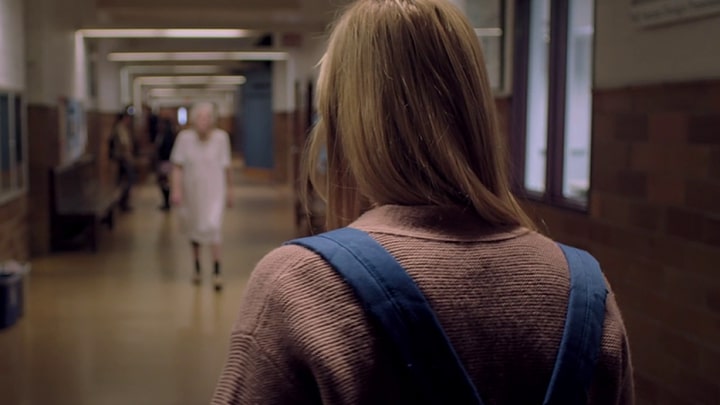
What could be more terrifying than an unstoppable force that wants to pin you to a wall with a kitchen knife for all of that teenage angst you’ve been getting up to or chopping a machete diagonally through your face for all of that premarital sex you’ve been having? Doing so without ever breaking into a sprint, apparently. From undead machete wielding freaks to the “stabby” result of a druid curse, the slow killers and gruesome death-dealers have been a staple of horror franchises for some time now. Unfortunately, however, Hollywood has peddled these tropes into mediocrity.
That is, until director David Robert Mitchell’s film debut of It Follows was released back in 2014. The tale of a sexual transmitted curse that afflicts the host with a constantly pursuing supernatural entity that never stops and only those that have the cursed are capable of seeing it. Taking the form of complete strangers or your best friends, this being’s only goal is to catch you, kill you, and move onto the next poor soul that gave it to you.
The slow pacing of both the film and the unique take on the stalker antagonist builds a never-ending sense of dread. During the second act, Jay, our protagonist, is sitting in her high school classroom when she glances out the window to see an elderly woman in a hospital gown walking in her direction. For such a peculiar sight, no one in the immediate area seems to notice and the woman just keeps meandering towards Jay while never taking her eyes off of her. In a panic, Jay leaves the classroom only to come face to face with the elderly woman now in the hallway. Still, no one seems to notice and she simply keeps walking right towards Jay.
It is a dreadfully uncomfortable moment almost straight out of John Carpenter’s Halloween when Michael Myers can be seen outside of the school just looking in at Laurie. Utilizing the tropes of the slow pursuer and updating the setting and killer to a modern era, David Robert Mitchell managed to take what was once an old, outdated method of characterizing the antagonist of horror films and created a new, refreshingly terrifying film that broke the previous mold by telling a familiar story in a new way.
Bloody Revenge
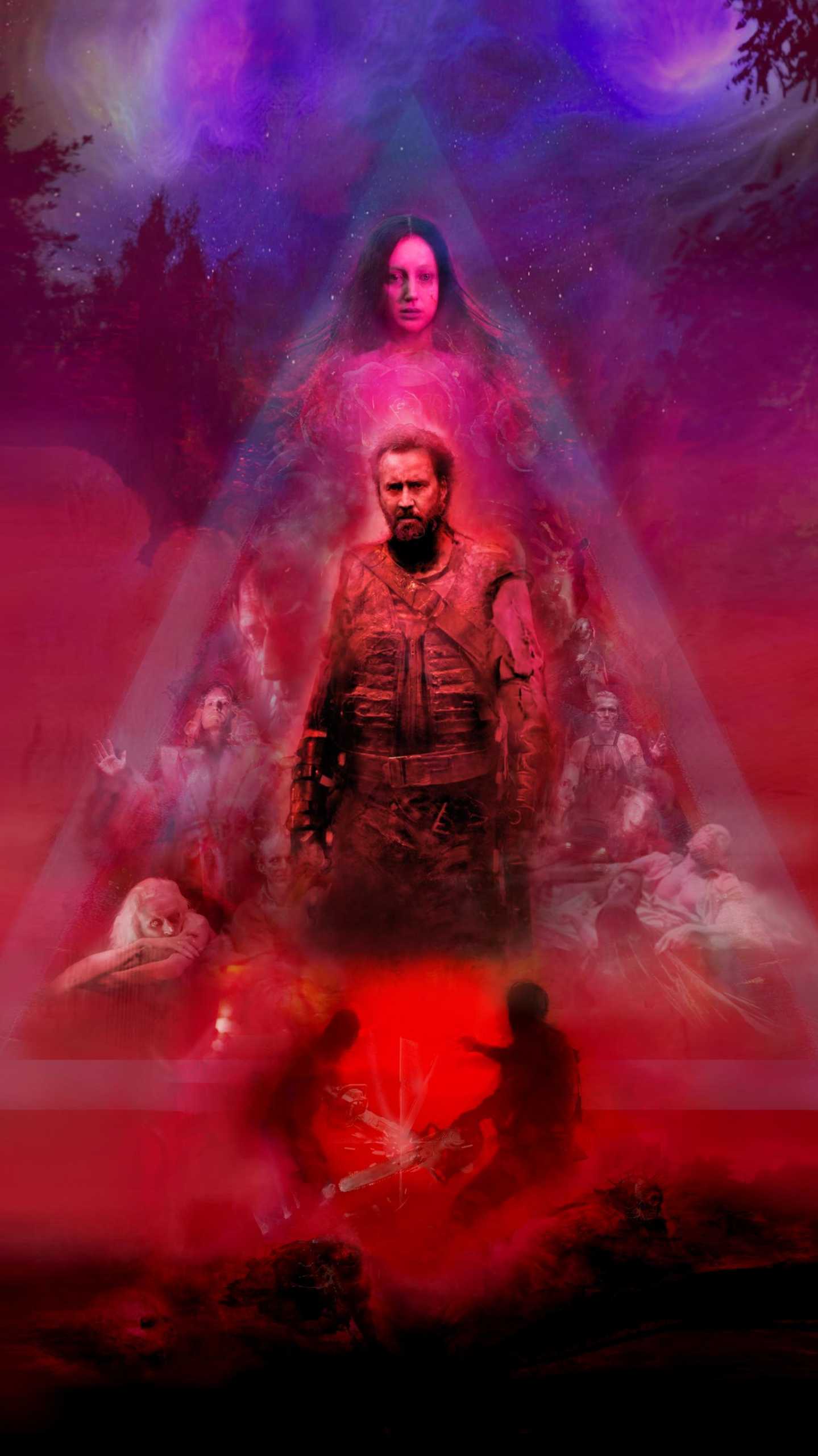
What happens when a small group of everyday people encounter a roaming cult of depraved, sadistic murderers? Death, obviously. We’re talking about horror movies here people, keep up. How many films took this idea and ran? Texas Chainsaw Massacre, The Hills Have Eyes, and The Last House on the Left are just a few in a long line of films featuring villains wronging our heroes in such a uniquely horrible way, there was only ever one option left: sweet, bloody revenge. But how many times did we see a film such as this before we stopped caring?
Panos Cosmatos is a Greek-Canadian film director born in Italy. His debut film, Beyond the Black Rainbow is a psychedelic callback to films such as 2001: A Space Odyssey, taking the 1960s perspective of what the future would look like and setting it in what feels like a sci-fi horror film from 1980. His follow-up film, Mandy starring Nicolas Cage and Andrea Risenborough, is where the director truly found his stride.
The film follows Red and the love of his life, Mandy, living their quiet lives in a secluded forest when a nightmarish hippie cult and their demonic, blood-guzzling henchmen arrive and terrorize them. The cult leader, Jeremiah, spots Mandy walking down a lonesome forest road and sends his followers to take Mandy back to their compound.
In a performance that is comparable to real-life Keith Raneire and his former sex cult, NXIVM, actor Linus Roache brings a true flair to the lunatic cult leader. After his failed attempt to indoctrinate Mandy through the use of a hallucinogenic wasp sting and his sales pitch about being the messiah, she turns him down in the most powerfully emasculating way possible: laughing in his face.
Mandy is ultimately murdered in front of Red and the cult leave him for dead, leading us down yet another one of Panos Cosmatos’ hallucinatory, psychedelic rides. Only this time into the depths of bloody vengeance and over the top mayhem.
Panos Cosmatos has taken the classic revenge plot and blended it with his own unique perspective. Mandy is beautiful and violent all at the same time. With outstanding performances from the entire cast (I know, even Nicolas Cage brought his A-game to this one) this tale of revenge should be held among the greats of the past fifty years.
Let The Wrong One In
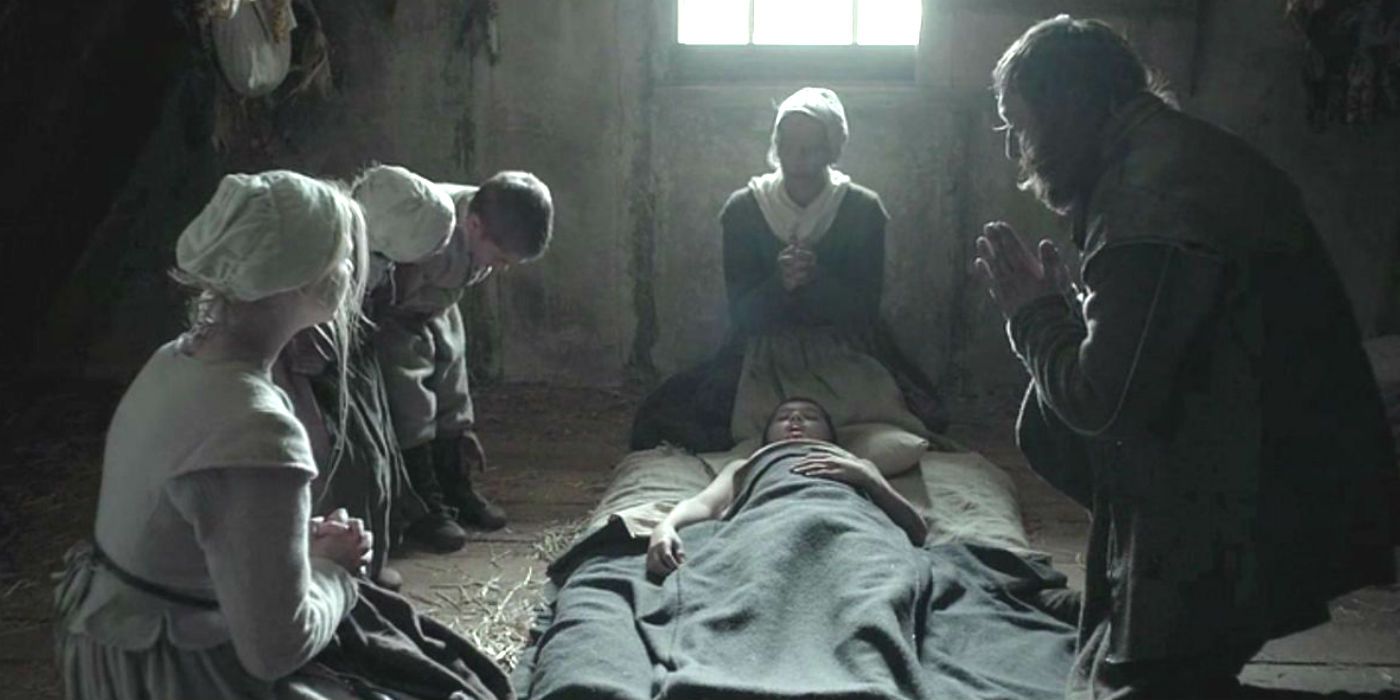
Long before films such as Rosemary’s Baby and The Exorcist were introduced to audiences, people have been truly unnerved by the idea of demonic or supernatural forces, and films have often prayed upon this fear in audiences. Is it because it taps into a fear of hell or eternal damnation. Perhaps there is an innate fear of the dead or otherworldly haunting the living.
But after six Paranormal Activity movies and countless films with titles like The Exorcism of “Fill in the Blank,” people may have officially stopped worrying about it. Perhaps it turns out that hell might be the more desirable alternative to watching another hack film about demonic possession. So, how do we change the game? How do we make the idea of the devil in film scary again?
Well, in 2015, Robert Eggers released his debut film The Witch. The films revolves around puritanical family in 1630s New England being torn apart by the forces of black magic, possession, and witchcraft. The film begins with the family being shunned from their community and forced to live in solitude far from civilization. Shortly after their move to the border of a vast, unexplored wilderness, the newborn son goes missing. What follows might be one of the most horrific scenes ever witnessed on film and that’s relatively early on in the second act. Their crops begin to fail, another child becomes “sick,” and ultimately the whole family turns on one another and one by one, they all succumb to the devilish force plaguing them. Every detail of this film is eerie and the ending is one that no one will have seen coming and almost demands multiple views to catch the minute details throughout the film.
The true horror of this uniquely bleak film is the fallout that occurs within this already destitute and diminishing family. A missing baby, the son being cursed, the twin’s malicious nature, the angry and helpless father, and the mother who blames everyone else around her for what is happening. Robert Eggers brought fresh sense of dread and intrigue to his film that makes the film truly stand out among the slogs of Hollywood’s shortcomings.
Then, there is Ari Aster and his film Hereditary. Clearly Ari Aster takes a great deal of influence for this film from both Rosemary’s Baby and the Paranormal Activity films (more so the latter of the two films because there is almost a one to one comparison that could be made for the major plot points of the film; a family is haunted by a demonic spirit, the parents are responsible, there’s a cult, etc.) but where Aster’s film differs is in the delivery. Hereditary is no found footage rehash; it is a deep dive into a family in mourning with a powerhouse performance by Toni Collette as the grieving mother. It’s a film that the moment it is over leaves you wondering “what the hell did I just watch?” and upon subsequent viewings provides the sufficient foreshadowing towards the absolutely horrifying ending.
Directors like Robert Eggers and Ari Aster both understand that what is most important part of any story, horror or otherwise, is the characters and they’ve told fantastic, dramatic tales of families suffering and wrapped that around the supernatural to bring new horror to the outdated subgenre.
Nazi Murder Party Massacre
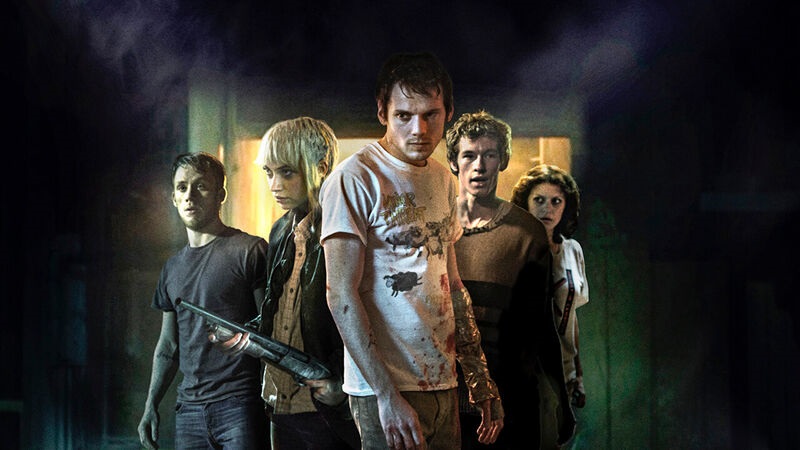
Back in 1976, John Carpenter (still mostly unknown at the time) made the cult classic, low-budget action film Assault on Precinct 13. The film follows a ragtag group of cops and criminals joining forces to survive the onslaught of violence by a bloodthirsty street gang. In 1977, Wes Craven releases the cult classic The Hills Have Eyes where an unfortunate family’s car breaks down in the middle of the desert and are attacked by clan of psychotic cannibal criminals. Perhaps the “pinned down and fight for your life” scenario was never as popular or familiar to most horror aficionados but these films truly capture dread and tension so well.
Reaching its heyday in the late 1970s, the likes of such films never quite saw the resurgence of some other more popular ideas that mainstream horror films tended to capitalize on. Sure, both previously mentioned films had their own modern remakes (The Hills have Eyes remake is actually rather impressive) but other than similar ideas of a group being slowly picked off by a monster, such films mostly just went away. That is, until a talented young director by the name of Jeremy Saulnier came along with the film Green Room.
Now, perhaps there are those of you out there shouting at your computer/phone screens that this shouldn’t count on a list of horror movie tropes, and maybe you’d be right, but I’d argue the events in this film are more dreadful, more gut wrenching, and more nerve-racking than anything most horror films would hope to achieve.
Jeremy Saulnier has stated that this film marks the third in a trilogy in which he highlights “inept protagonists,” or individuals doing they absolute best they can or are capable of given their circumstances. The film follows a young punk rock band who get a gig in a secluded Pacific Northwest bar that’s run by skinheads. After the show, one of the members witnesses a murder in the titular green room and they band end up locking themselves in for fear of what the skinheads will now do to them.
Things devolve quickly as in an attempt to give the skinhead leader a gun the punks acquired during the initial mayhem, Anton Yelchin’s (RIP) arm is viciously attacked with machetes to the point where it appears that his hand is barely hanging on. From there, dogs rip people apart, people are stabbed, shotgun blasts are caught to the face, and never once does the audience feel like the events are nonsensical. Every move made by both the punks and the skinheads are logical and the very best they can do given the situation each party finds themselves in. Both parties, the punks and the skinheads, are trying to get out of the situation on top and both are limited as to how they’re able to go about doing so.
The shock and awe of a first viewing of this film is horror at its finest with the tension never ending from the moment of the inciting incident and will keep you on the edge of your seat.
(A few honorable mentions include Ready or Not and The Belko Experiment as well.)
Good Grief
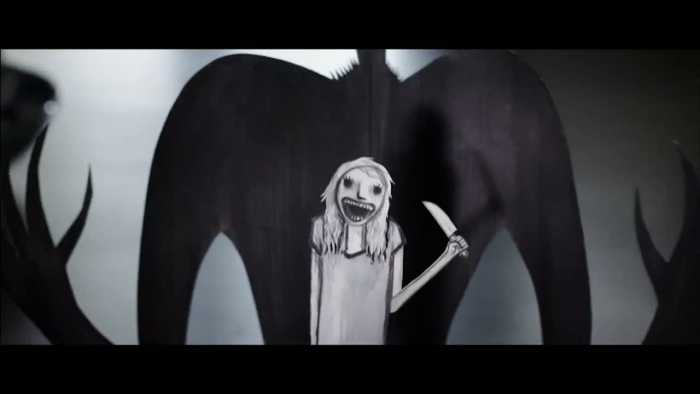
In 2014, the world was introduced to Australian filmmaker Jennifer Kent and her debut film The Babadook: a harrowing allegory for grief and parenthood. This may be the one film on this list that doesn’t actually have it’s own counterpart. Perhaps the aforementioned film Rosemary’s Baby share some aspects and Hereditary certainly deals with grief but The Babadook might stand alone in this unique story utilizing German Expressionism (using hyper-expressive performances to show inner turmoil).
The story centers around single-mother, Amelia, and her ill-behaved son, Samuel. We learn that Sam’s father died on the way to the hospital and Amelia is unable to separate her son’s existence from her husband’s death, making her unable to move on and simultaneously unable to love her son. Because of this, Sam has some severe behavioral issues.
Soon after the film starts, Amelia and Sam discover a children’s book about Mr. Babadook, thus starting the downward spiral the two go through. The Babadook becomes the physical manifestation for everything plaguing their relationship, making the mother becomes increasingly unnerved, reaching a boiling point where she becomes inhabited by the spiritual monster and attempts to kill her child.
Sam gets through to his mom and tells her that he knows she doesn’t love him and that he still loves her, bringing their relationship’s issues to the forefront and breaking the monster’s hold on Amelia. By the end of the film, Amelia and Sam both seem happy, having dealt with the metaphorical and literal monster that had been plaguing them and having finally confronted the tragedy that Amelia had refused to acknowledge and finally moving on past her husband’s death.
The film as a whole is about not dealing with a tragedy, and the emotions that come with it, portrayed through a heightened reality. It is an exploration into mental health that Jennifer Kent uses to create a truly terrifying story about loss and the monsters we can unwittingly create in the process.
What You Can’t See… Could Kill You
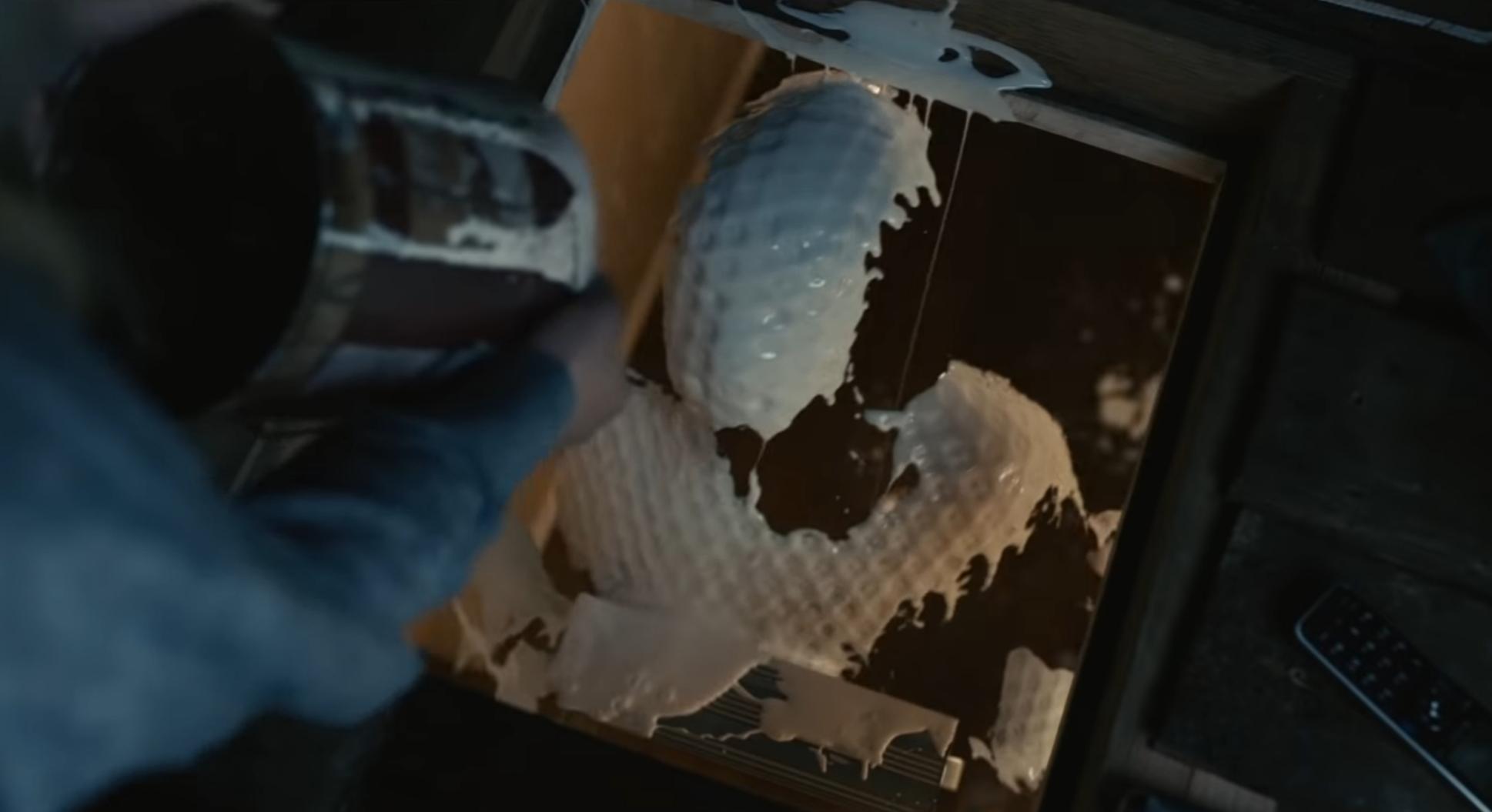
Perhaps some of you reading this are familiar with Australian actor/writer/director Leigh Whannell who is responsible for penning the first three Saw films as well as the Insidious franchise. In recent years, Whannell has taken a step forward towards not only writing the stories but directing them as well, starting with Insidious: Chapter 3 and working his way to Upgrade (a discussion for another article of its own) and final reaching the film that we’ll be discussing: The Invisible Man.
Now, of course this is a remake of the classic Universal Monster and tales of invisible foes has been done several times over (perhaps most recently in Paul Verhoeven’s Hollow Man and that was back in 2000) but what Whannell accomplishes with this modern update is as refreshing as it is unsettling.
The film begins with Elisabeth Moss’ character, Cecilia, attempting to flee from her boyfriend’s estate in the middle of the night, and Adrian (the boyfriend) is quickly revealed to be some sort of tech millionaire, setting up the plot right away. With almost zero dialogue until she leaves the house, we’re able to infer that she is in an abusive relationship which is made explicitly clear shortly after her sister picks her up in the middle of the night and Adrian charges the car, yelling and breaking the car’s window to get to Cecilia before the pair is able to escape. Days later, it is revealed that Adrian has taken his own life, left her millions of dollars, and finally freeing her from beneath his abusive shadow.
The story from there delves deep into the psychological aspects of abuse and fear, making Cecilia questions her very sanity and causing those around her to have a hard time trusting her as well. The tension never stops as we watch Cecilia struggle to make those around her believe her that her Adrian is not only dead but more often than not, in the very room with her.
The reveal comes approximately halfway through the film and from there, we see the extent of what Adrian had accomplished and Cecilia’s turn from abusive survivor into a strong-willed protagonist unwilling to give up or let Adrian’s reign of terror go unpunished. Elisabeth Moss blows us away in her ability to capture the mental state and perpetual fear of someone living in an abusive relationship and seeing her turn, growing into someone willing to fight back, is nothing short of impressive.
Taking the timeless trope of fear of being watched by someone or something we cannot see and bringing it up to date for modern audiences with a strong emphasis on technology and abuse, this modern update on The Invisible Man is one that any horror fan should take note of (as well as keep a close eye on Leigh Whannel [whose also been tasked with directing the Escape from New York remake]).
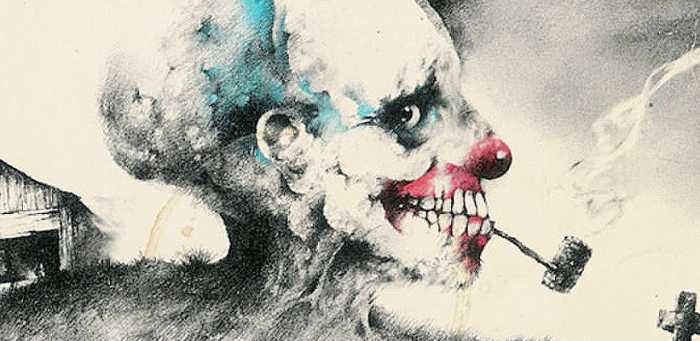
As much credit is due to these talented individuals, it is not due solely to the reintroduction of these classic horror elements as much as the characters themselves. Each film listed has, at its core, has a powerful story of human conflict creating compelling narrative and building the tension and dread, telling them in new ways to unnerve us all once again.
Do you disagree with any of the films mentioned? The value of the directors or the validity of their contribution to horror cinema? Are there any films that were overlooked that you think should be included?
What do you think? Leave a comment.











I took two film studies courses last year and I definitely see how these movies put a spin on the old tropes. I probably won’t watch most of these (except for The Babadook, since I’m both unfamiliar and uncomfortable with horror films), but I definitely think they’re unique and would be fun for other people.
OkaNaimo0819,
Thanks for the comment. I’m glad this could pass muster of someone whose taken film study courses. Your comment also make me realize that this must extend beyond just horror. What other genres have borrowed older ideas and made them fresh in new and interesting ways? Perhaps a follow up article is required for a deeper analysis.
As someone who has never seen a horror movie, it’s interesting to read articles like this without having any bias (or knowledge).
Good article!
I am not a horror movie buff yet It Follows was a movie which did intrigue me with it’s concept. This article has also laid the foundation which can be used to examine horror films in other languages. It would be interesting to read about films like ‘Train to Busan’, ‘Lapachappi’ and ‘Tumbbad’.
Interesting point, Dr. Vishnu Unnithan. Perhaps a dive into foreign horror films to dissect their tropes and how they’re keeping their horror films fresh and unique is in order.
See these films sound like they’d just scare the shit out of me. I’m nearly 40 and going soft.
Great article! Hit me with horror recommendations!
One that I really enjoyed and unfortunately didn’t include in the article is a film called The Ritual on Netflix. It goes in a direction I didn’t see coming and combines psychological and supernatural horror themes splendidly. High up on the list of most recent horror movies for me.
Am currently reading the entire works of Shirley Jackson who has obviously written some fairly straightforward ghost stories in her time, but which have had awful film versions of them made. However she wrote a huge number of other stories which fit far more clearly into the category of horror that this article mentions.
I throughly recommend any of her books, the novels are all fantastic in their different ways and the short story collections are vast. Outside of The Lottery, (which seems to undoubtedly be her best known short story in the US, as everyone seems to study it in High School) I’ve found dozens upon dozens of her other shorter works to be equally remarkable.
I just hope a director comes along who manages to take a clear understanding of her work *as it is* outside of the usual horror and ghost film tropes. Her work deserves it!
Thanks for the recommendation! I will definitely check out some of her books.
The 1960’s version of ‘The Haunting’ is one of the most terrifying films I’ve ever seen. Stays close to her novel and makes you think you’ve seen much more than is on screen, mainly thanks to a brilliant soundtrack
Couldn’t agree more; she is wonderful. Only came across her a few years ago, when I stumbled across ‘The Lottery’. My favourite of her novels is ‘We Have Always Lived in the Castle’. A film has just been made of it (although I’m not sure when it is due for release) – hope it’s not shite!
Stevie. I recommend ‘The Autopsy of Jane Doe’ (2016)
It couldn’t sustain the third act of It Follows, unfortunately – it looked pretty cool though.
Valid take. I think I adored the premise so much I probably overlook any flaws the film has.
“It Follows” fantastic, fantastic movie, can still recall some scenes.
It Follows was very scary right up to the moment it switched from post-horror to standard horror. Then it was a bit “meh”. Similar to Danny Boyle’s Sunshine, a film of two parts – first part truly outstanding, second part not so much.
Valid criticism of both films. I’m a huge advocate of Danny Boyle’s Sunshine, too, even though I admit the film takes a huge tone shift in the third act. (I may just be an apologist for creators I really enjoy.) Speaking of Sunshine, and this is a little off topic, Alex Garland penned the story and I’ve been taking a pretty deep dive into his stuff lately. Although he’s certainly more science fiction than horror, boy can the guy create some truly terrifying scenes and characters: I’m talking the the mutant bear from Annihilation and Kenton from Devs. Anyone else a fan of Garland’s work?
The bit in It Follows when they’re all in the house, and that very tall ghostly figure appears behind them in the doorway….I crapped it a little bit.
Much as I admired ‘The Witch’, it completely failed to scare me at any point and in any way, surely the first duty of a horror film.
Fair assessment.I personally got chills when Black Peter spoke out to her in the darkness. Something about the slow burn combined with the eerie setting just works for me.
The Witch certainly had its moments; the antics of Black Philip and the film’s ending were deeply strange and unsettling.
The Witch should have ended when the girl went to sleep on the table. The final scene totally ruined the rest of the film for me.
SPOILER ALERT for anyone who hasn’t already seen The Witch or learned too much about it from this article.
I personally kind of dug the ending. The majority of the movie lives in this ambiguity where we don’t actually know if there’s a supernatural element until the final few scenes. A woman (the witch) takes the baby and what she does to it is truly awful, but nothing about that is outright beyond what a person is capable of doing. The son later finds the witch’s lair and comes back altered in some way but, again, this is not explicitly supernatural.
However, once the movie reaches the scene where Black Peter speaks, as well as the final scene of the witches dancing around the fire where Thomasin literally begins to float, we are left with the that fact that we were actually witnessing the forces of witchcraft and black magic from the very beginning of the film. Almost makes a viewer want to watch the film again to see what sort of clues were left along the way or what events would be more satisfying by understanding the nature of what was happening. Food for thought.
Great coverage of the tropes. Recommendation time. South Korea have produced some fantastic horror/ghost stories in recent years. A Tale of Two Sisters, The Wailing, Train to Busan and I Saw the Devil to name a few. All excellent.
I am in absolute agreement. Although not exactly horror I would throw The Host on there as well.
Alta, do a follow-up article focusing on on South Korean horror films! I Saw the Devil would be a great film to dissect.
Korean cinema, without doubt, produces some of the best Oriental horror films I’ve ever seen. I consider ‘The Wailing’ (2016) to be pretty damn close to a masterpiece of horror cinema, although it does require some understanding of Korean folklore to comprehend the subtle layering within the storytelling. Don’t take it at face value. I wouldn’t classify ‘I Saw The Devil’ as a horror film though, it’s more a bloody vengeance story that becomes more horrific as the story progresses and the protagonist becomes what, or who, he despises.Still an excellent film though and highly recommended. One favourite of mine is Jeong Yong-ki’s ‘The Doll Master’ (2004).
I agree that I Saw the Devil falls into more of the thriller/suspense sort of genre but the torment and killings are in line with what would be considered horror. Kind of a strange middle ground in my opinion, but nonetheless would be an interesting film to break down.
Brilliant films. Isn’t the Wailing about these ritual killings and a dodgy cop getting drawn in and suspects this Japanese guy? Fantastic film that will grip you beginning to the end. Train to Busan, the West can learn a thing or two there about slick horror storytelling.
Re ‘The Wailing’ – essentially you’re correct, but there are games within games being played by several of the main characters. I haven’t seen ‘Train to Busan’ yet as I generally get bored with zombie films, but I suppose I should suspend prejudice and give it a watch.
Controversial opinion: I don’t really care for Train to Busan. I know, I know. I think maybe it got so much hype that I went into it with too high of expectations. Don’t get me wrong, it is a fun movie but it just didn’t do it for me. I will now willingly accept any and all criticisms that must be hurled upon me.
Well, I watched ‘Train to Busan’ last night…and I completely agree with you. Tired tropes and clichés by the score. There will no criticisms hurled at you from this quarter. In fact, the only thing I can say in its favour is that at least there was plenty of work for film extras.
“Train to Busan”
What on earth do people see in that shit film? Let’s be honest, if it was a Hollywood film with exactly the same plot, script, direction, production, but was called Train To Boston would anyone be praising it?
South Korea makes some magnificent films and some crap, Train to Busan being one to be filed in the latter.
One reason why people are attracted to horror movies is because many do not want to see the misery and helplessness in our real lives. Talk about Fassbinder and I hear people say: His moves are all pessimistic and depressing. Same can be said of many other subjects like homosexuality, racism and dislike about those who think differently. So it is easy: shut your brains and watch these idiots playing with our low IQs and coldness towards real life stories like War And Peace or God of small things.
The misery and helplessness of our lives is exactly what the best horror films are about.
I, Daniel Blake qualifies as a horror film.
Very harsh statements.
Great piece. Some good films I need to check out now.
Horror can be a very conservative if not puritanical genre – look what happens to sexually active teens in slasher movies. Fans too, who always want more of the same. So when something new or different comes along they often hate it.
True. The Shining was slated for years until gradually, mysteriously it became a classic. To the point it seems to have supplanted 2001 as Kubrick’s “best” film. Go figure.
I wonder, was The Shining successful upon its release or did it build its reputation and fan base over time like cult films do?
The Shining is wayyyyyyyy better than 2001. WAY BETTER. I can’t even sit through 2001 without having to go do something else. How it acquired cult status I have no idea.
It seems to me that there are basically two types of horror film : the first is designed to entertain those who like a good story well-told and skillfully filmed, and the second is crafted in a calculated manner to satisfy thrill seekers. The genre is irrelevent, whether it be sci-fi, animation, comedy, disaster, gangster, horror, war, etc. The quality of the story and dialogue, together with the nature and frequency of the disturbing and/or “blood-and-thunder” scenes will depend on the age and intellect level of the target audience.
Jefff, valid argument. Genre is irrelevant when discussing quality storytelling and dialogue and their correlation with age and intellect of the audience. Ian Miculan just wrote an article on the site regarding cult films that touches upon the audience in relation to the films. You should check it out if you haven’t.
Great article! As a horror fan, I’ll have to check out some of these films!
I have to admit that I’m not a fan of western horror films in general, for the same reasons you’ve covered in the beginning of your article. You can literally count the beats between jump scares and corny lines that set up the next bout of bloodletting. Now, give me a well written Oriental horror (the list is endless) and I’m riveted to the screen, but that’s a subject for another time (or article). However, on the recommendation of a friend, I watched André Øvredal’s ‘The Autopsy of Jane Doe’ (2016) a few nights ago and I was pleasantly, or rather horrifically, surprised, so it just goes to show – you can’t throw all your brains in one bucket. Okay, so the script could have been a little tighter in places and I wasn’t fully convinced by the set up (I’m trying not to give away spoilers, just in case you haven’t seen the film), but it is one of the few western horrors that I’ve watched twice, simply to work out if the whole story was ‘real’ (in context) or an illusion. What I initially thought were continuity slips turned out to have relevance to the plot. Still, coming from André Øvredal (who directed ‘Trollhunter’ 2010) I should have known this wasn’t going to be standard shlock fare. Well worth viewing, in my opinion. Don’t believe everything you see on screen!
You want to know something? I’ve seen both films and I never even put it together that the director of Trollhunter (great film) was the same person who directed The Autopsy of Jane Doe (I agree that it’s surprisingly better than you would think and now I know why).
Chillingly good article! I find myself particularly drawn to the demonic influence and good grief tropes. The remake of Needful Things does a bang-up job of the former.
I much prefer a horror that plays the long game, that drags you along a journey of relentless anxiety, rather than the tired tropes of frequent shocks (or non-shocks). Cinema-goers who expect to be jumping out of their seats every 10 minutes when a character closes a bathroom cabinet seem incapable of giving themselves over completely and inviting in the slow-build, ratcheted-up sense of anxiety and foreboding that films require, which is a shame.
Nothing is worse than that tired trope of the bathroom mirror closing and the ensuing jump scare that follows. Albeit some movies try to subvert this expectation but in my opinion, that trope should be put on the “do not use” list of what is acceptable in horror these days due to its over usage. Come on, people, we’re better than this.
Filmmakers. Please, no more slasher movies and young women being raped. It’s so low and lacking in any creativity. I can’t stand “college” horror. I am a mature adult and I require intelligent, creative horror. I love psychological horror. This can be done with even just one main actor if the movie makers are clever enough. The French make some amazing moody, brooding, psychological horror and that does not surprise me. They go all the way.
This. This comment right here. “I require intelligent, creative horror” deserves all of the praise.
None of my favourite movies are from the horror genre yet my favourite genre to watch is horror. I mean compare any movie to Orson Welles, Nicholas Roeg, Lars Von Trier anbd you will understand why I said that.
Horror was, is and always will be schlocky by its very nature. Horror is the “camp” of fear. There is nothing made up on a screen capable of frightening me. Real life and history has real horror and screen will never be able to compete with that. The screen is always an illusion; a medium that tries to trick the senses into the desired response.
I have noticed that some female directors are performing miracles in this genre of late. Women are amazing at horror. They are very fresh with some great ideas. Women are very good at psychology.
I don’t know whether you are being honest or sarcastic.
Couple of recommendations for any horror afficionados:
It Follows – already been mentioned on this article.
Lake Mungo – Australian documentary-style film in which the seemingly ordinary life of a teenage girl is slowly and ominously peeled back by her family’s investigations into her mysterious death.
Both good. The most impressive horror I’ve watched lately is Flowers.
A good essay. Some of these films I have not seen, now I have a reason to see them.
Dude, there are so many grammatical errors and misspellings here. It takes away from your valid points! Have someone read your rough draft before you post it on the internet, but also… good analysis.
Valid criticism, Max. My first read through after it was published was pretty cringe-inducing because I caught several of the errors myself. I’ll have to be more diligent checking my own work so the editorial staff can just clean it up rather than catching any errors. So, thank you for the kind words as well as the critiques because I will learn from this and do better in the future.
Interesting perspective on what happens when genre tropes wear themselves out, especially considering that one of the horror genre’s main tropes is intensity and if you crank that up too high, you don’t get max. intensity. I enjoyed your analysis, deadpan writing style, and recommendations. Yes, those movies re-write the tropes and to some extent the medium of film. Do you think it has to be both in order for a contemporary horror movie to be relevant (not just good entertainment)? Hereditary changes tropes and also what it means for something to be fiction in general. I think of a movie like Peele’s “Us” and how it does the same thing – including breaking down the notion that there is such a thing as a “genre” by itself of horror perhaps?
Apt observations, gitte. I’m glad you enjoyed the article. To answer your question: yes and no. I do think that it takes a bit of rewriting the old tropes as well as altering the medium of film to keep things fresh and relevant, but that’s not to say that great horror/films can’t be created using the methods of old and still be consider good films. I do, however, completely buy into the camp that while new isn’t always better, it is preferable as it keeps us moving forward rather than constantly looking back. Learn from the past but keep reinventing what it means to be horror, or any other genre for that fact of the matter. I can say with all honesty that your insights are going to have me keeping my eyes out for any articles you publish here.
Side note: in hindsight, Peele’s “Us” or “Get Out” would’ve been great inclusions on this list.
Interesting analysis!